
4 Player Chess
Are you in the mood to try a new and exciting way to play chess? If so, 4 Player Chess might be just what you need!
- What Is 4 Player Chess?
- Rules Of Standard Free-For-All 4 Player Chess
- Rules Of Standard Teams 4 Player Chess
- Other 4 Player Chess Variants
- Conclusion
What Is 4 Player Chess?
4 Player Chess is a family of chess variants played by four people at the same time and on the same board.
Each player has a different color for their set of pieces, namely red, blue, yellow, and green. The game always starts with Red and follows in a clockwise order. Another difference of 4 Player Chess is the board, which has 160 squares because three extra ranks are added to each side.
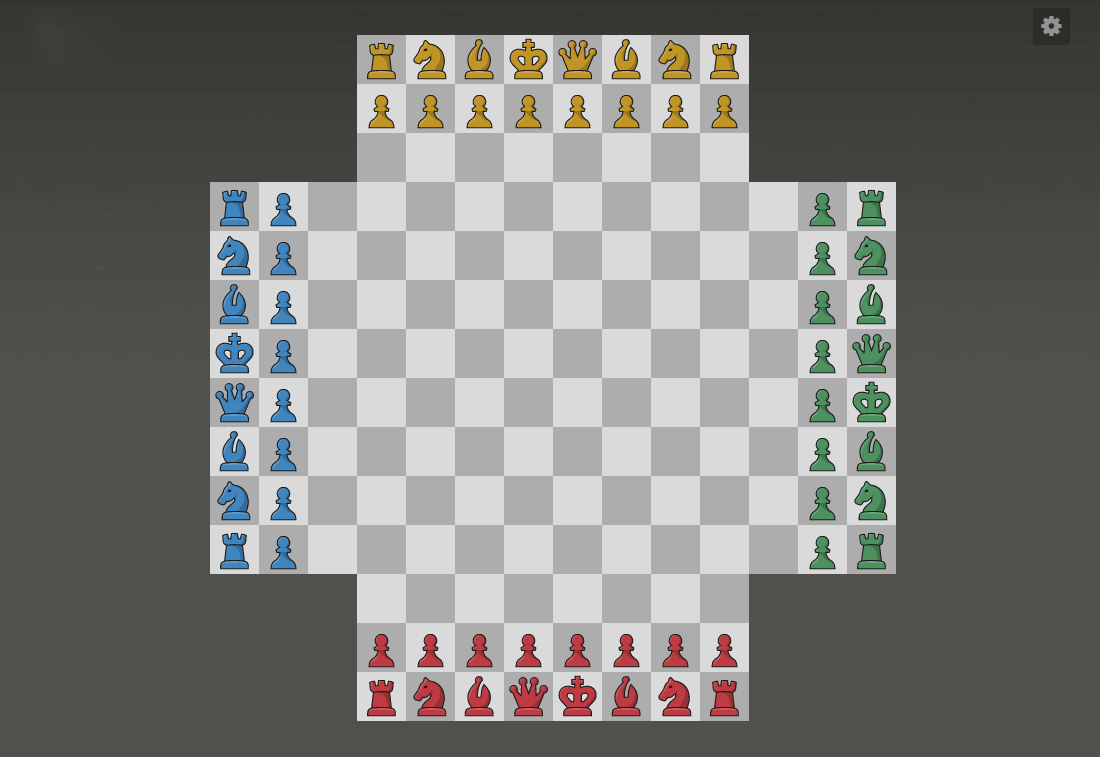
The rules for regular chess mostly apply to these games, along with additional regulations specific to each variant. In 4 Player Chess, Free-for-All and Teams are the two main variants. Players can also customize rules to add even more flavor to their games.
Rules Of Standard Free-For-All 4 Player Chess
One of the most prominent variants of 4 Player Chess is the Free-for-All game. As you can guess by its name, in this type of match, each of the four players is battling alone against the other three.
The goal of this variant is to finish the game with more points than your opponents. There are many ways in which a player can earn points:
- By checkmating an opponent (+20);
- By stalemating oneself (+20);
- By stalemating an opponent (+10 for each player still in the game);
- By checking more than one king simultaneously with a queen (+1 for two kings, +5 for three);
- By checking more than one king simultaneously with a piece other than a queen (+5 for two kings, +20 for three);
- By capturing active pieces (+1 for a pawn or promoted queen, +3 for a knight, +5 for a bishop, +5 for a rook, and +9 for a queen).
Just like in regular chess, pawns promote when they reach a player's eighth rank. In standard Free-for-All games, however, a pawn is automatically promoted to a queen. If captured, that queen only yields one point to the player who takes it.
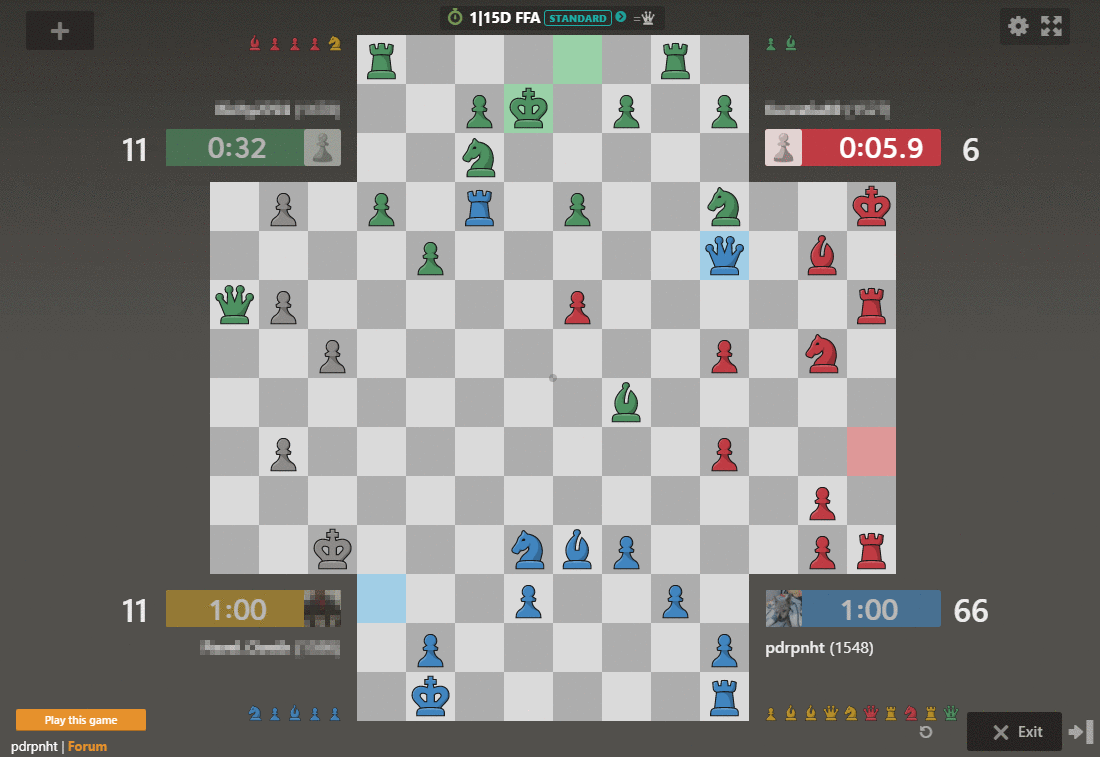
During the game, a player is eliminated by resigning, being stalemated, checkmated, or if their time runs out.
When a player is checkmated or stalemated, all of their pieces become inactive and are grayed out. Capturing those pieces does not provide any points.
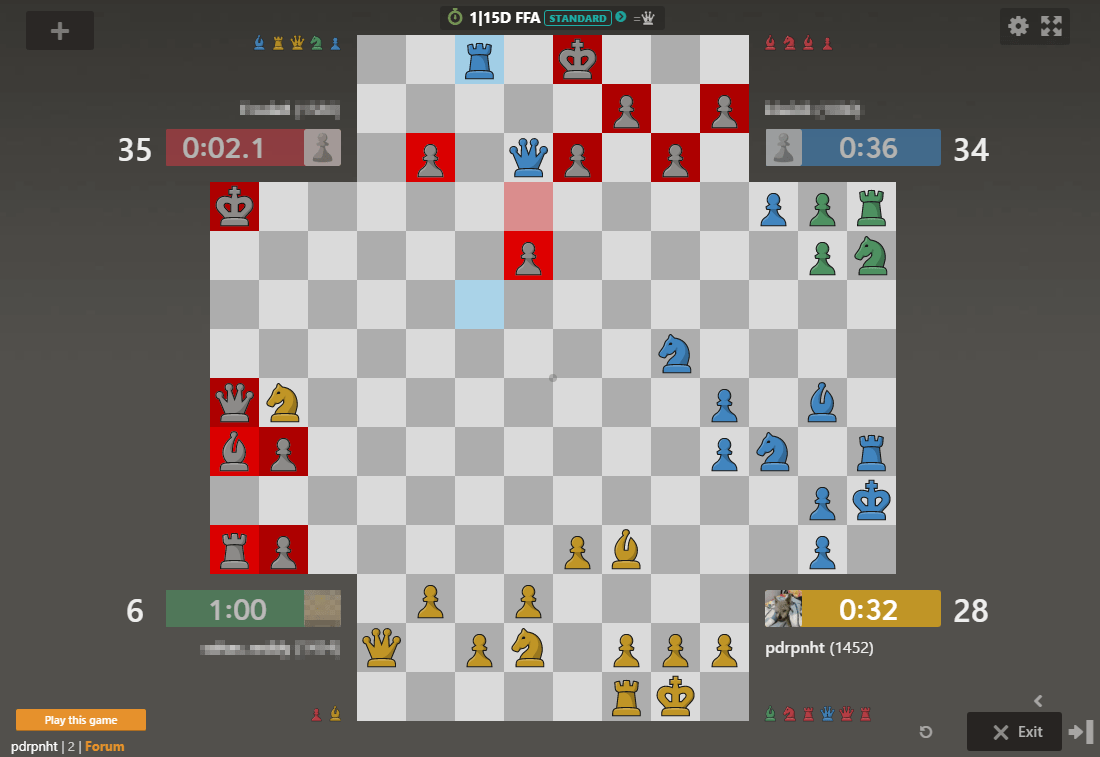
When a player resigns or runs out of time, their king remains alive and moves at random. Checkmating a king yields 20 points to the player whose delivers the mate, and stalemating it awards 10 points to each remaining active player.
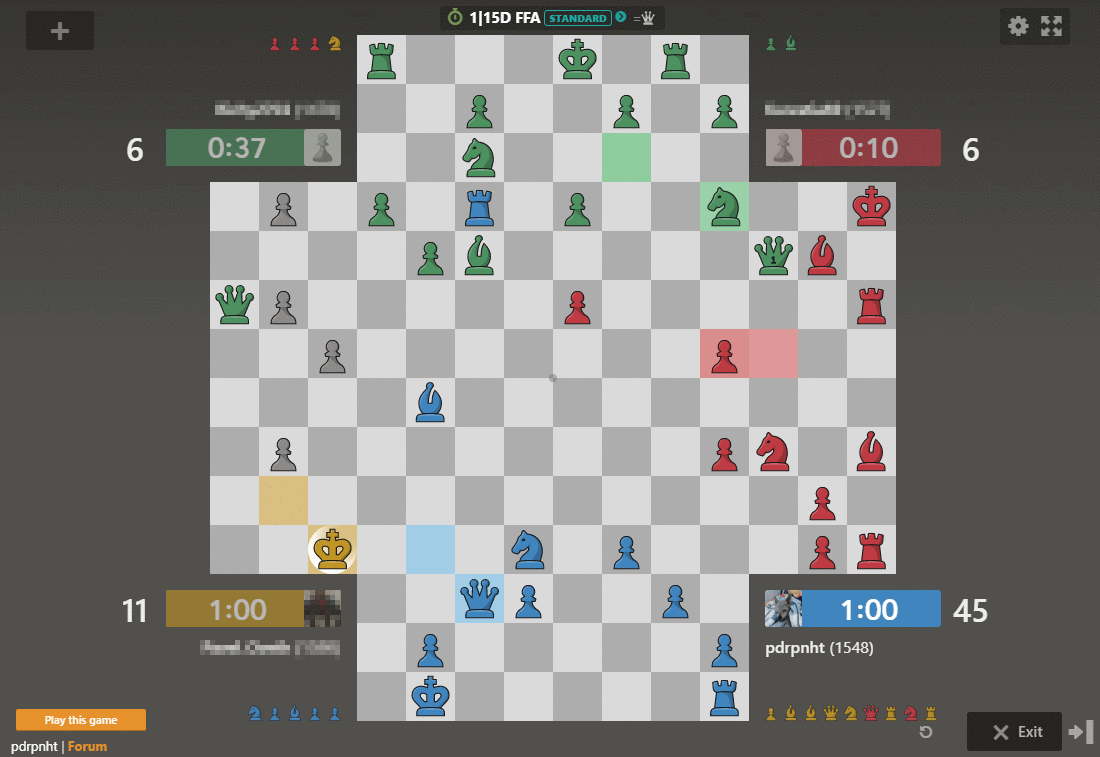
If there is a draw by threefold repetition, insufficient material, or the 50-move rule, all active players receive 10 points each.
The game ends when three players are eliminated. Additionally, a game can end when just two players remain, and one of them is ahead on the scoreboard by 21 or more points. That player can claim victory by resigning and awarding the other player 20 points—not enough to reach first place.
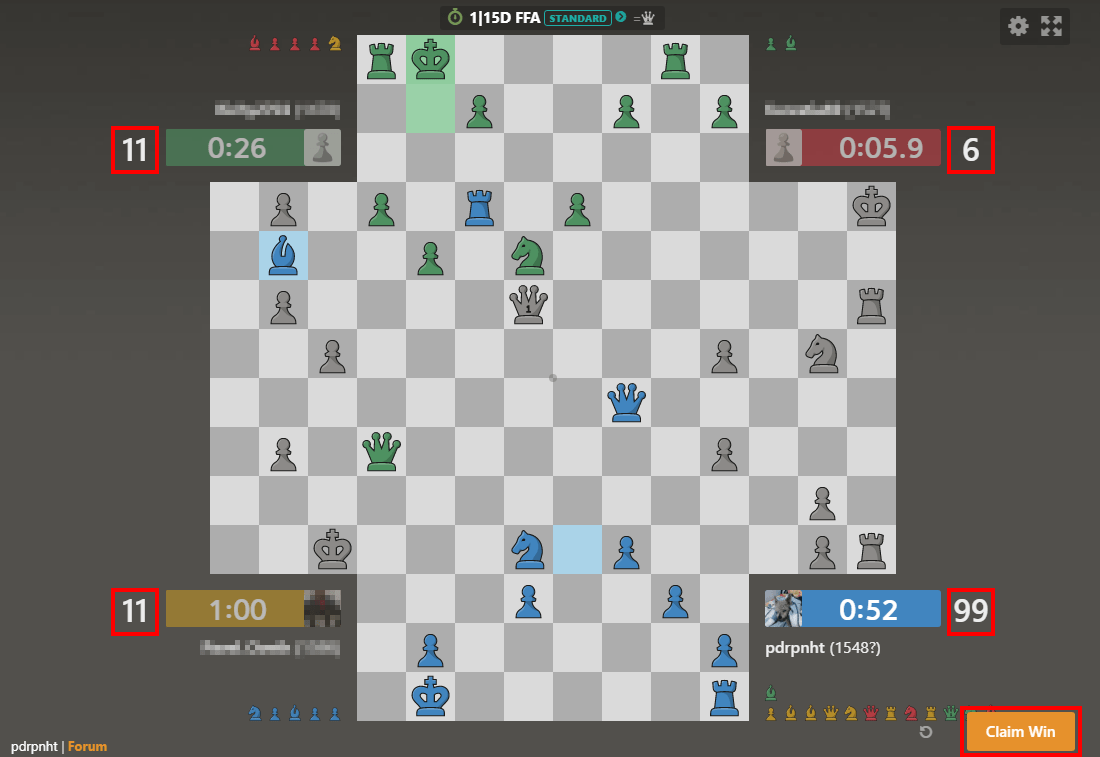
It is important to note that in Free-for-All standard games, one cannot communicate with other players to join forces. Doing so is prohibited and can get you banned. However, another 4 Player Chess variant called Diplomacy encourages this sort of "unofficial" coordination.
Rules Of Standard Teams 4 Player Chess
As implied by teams in its name, this variant differs in play from Free-For-All. Teams are composed of two players each, who are always across the board from each other. Players cannot capture their teammate's pieces.
Since team play is crucial in this variant, players must communicate with their partner to gain an edge. Chess.com makes it easy for you to share your ideas with a teammate by drawing arrows on the board. The in-game chat also allows you to send private messages on a team channel, so the opposing players do not know what you are planning.
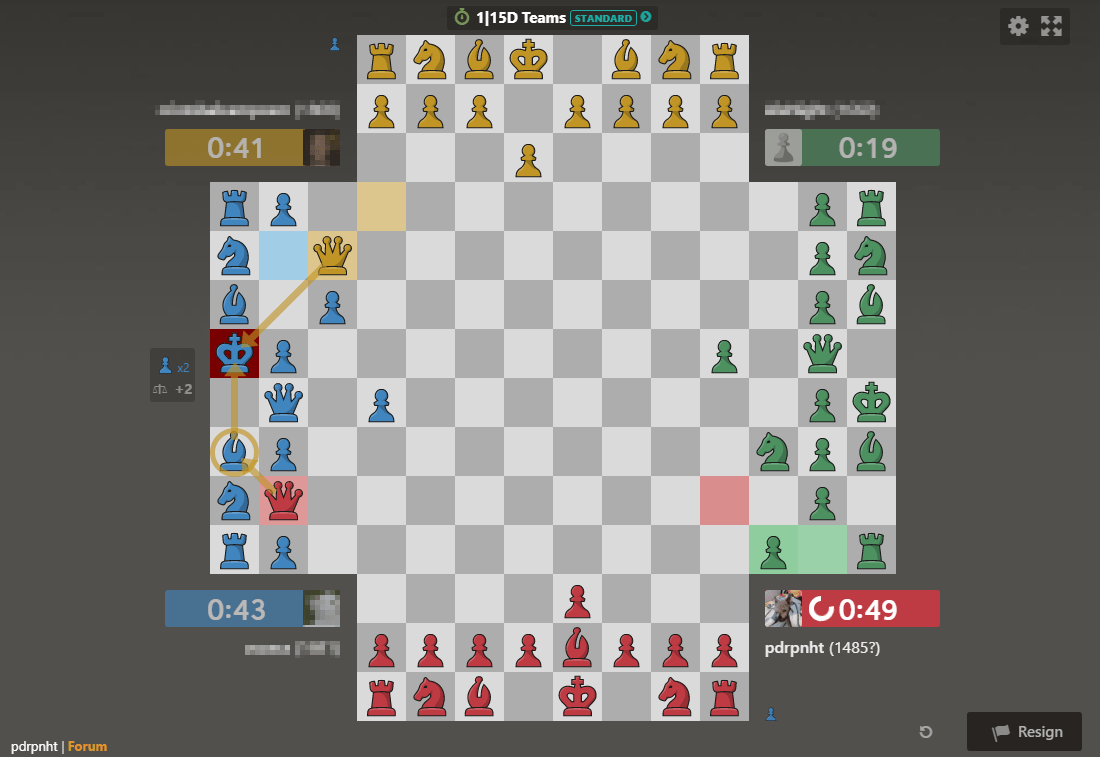
Unlike in Free-for-All games, for Teams matches, pawns promote on the 11th rank. For standard Teams matches, underpromotion is also possible.
The goal of the game is to checkmate one member of the opposing team. Stalemating causes the game to draw. Both only happen once the mated or stalemated player's turn to move is reached, so it is even possible to "escape" a pending checkmate by checkmating another player first. Check out this video of the 4 Player Chess Team Championship held here on Chess.com where it happened.
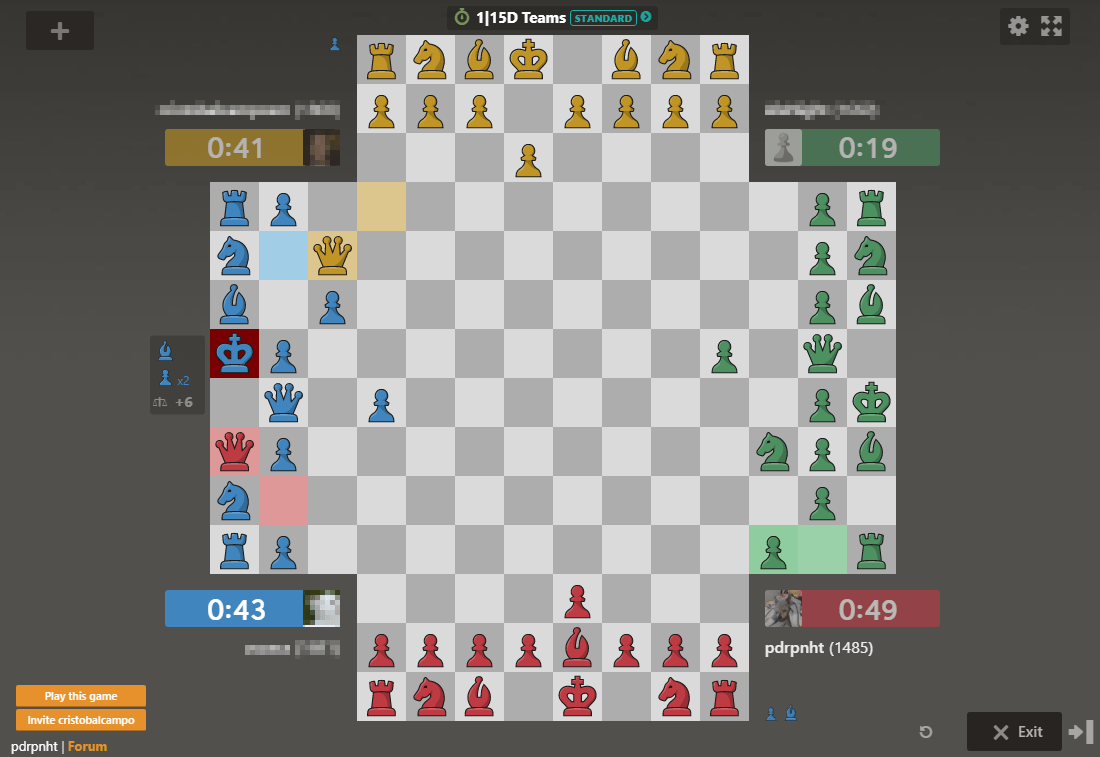
The game can also end if a player runs out of time or resigns. In this case, the other team wins the match.
Other 4 Player Chess Variants
Since 4 Player Chess games can be customized in many ways, there are also numerous variants that one can create by combining different sets of rules. The most common variants are Solo and Diplomacy, but you can also play 4 Player Chess960, 4 Player King of the Hill, 4 Player 3 Check, and others.
Join our official 4 Player Chess Club and read this note about other possible variants!
Conclusion
You now know what 4 Player Chess is, and you are ready to play it! Click the button below to start a game of 4 Player Chess.







